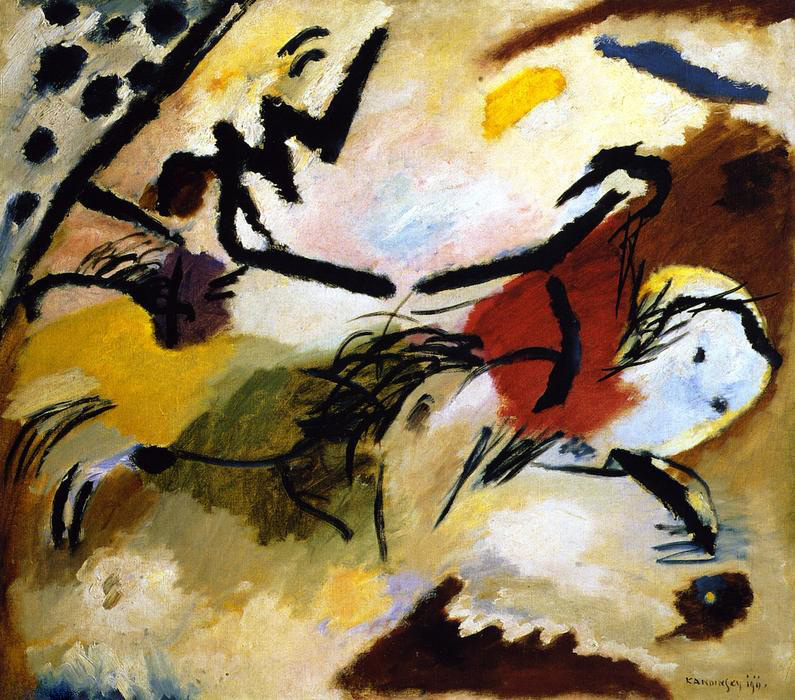log in
Enter site
Login to use Arthive functionality to the maximum
Improvisation No. 20 (Two horses)
Wassily Kandinsky • Painting, 1911, 94×108 cm
Description of the artwork «Improvisation No. 20 (Two horses)»
In 1911, Wassily Kandinsky and Franz Marc co-founded ‘The Blue Rider’ art association. Despite of its brief existence, ‘The Blue Rider’ had a major influence on the entire German painting. Eight years earlier, Kandinsky painted his post-impressionist painting ‘The Blue Horseman", but the artist never claimed that it gave its name to the association. Kandinsky explained it much simpler: “We both liked the blue color. I liked riders, and Marc liked horses.” Indeed, even in "Improvisation No. 20" on the backs of the Ghostly and almost completely abstract horses, you can trace the outlines of the riders on the backs of the ghostly and almost completely abstract horses.
Two years earlier, Wassily Kandinsky and Gabriele Münter arrived in Murnau, a small town in the foothills of the Bavarian Alps, at the invitation of their colleagues. It was here that Kandinsky’s move towards the abstractionism started. The works of this period featured well recognizable shapes and objects, but they gradually lost volume as the artist changed perspective and blurred boundaries. ‘Improvisation No. 20’ was one of Kandinsky’s last pictures, in which you can still distinguish the contours and forms of real, though distorted, objects. After that there will come a time for pure abstraction.
For Kandinsky, painting was inseparable from music. It is not definitively known whether the artist had synesthesia, as experts are still in two minds on that. However, Kandinsky’s contemporaries, like the artist himself, claimed that he was really able "to hear" colors and "to see" sounds. It was not by accident that the artist called his abstract works "improvisations" and "compositions", the words that were applied to musical works.
Kandinsky said, "Color is the key. The eye is the hammer. The soul is the piano with its many chords. The artist is the hand that, by touching this or that key, sets the soul vibrating automatically." Amazingly, as we look at his "Improvisation No. 20", in which a sense of rapid movement is created only with the help of bright color spots and black contours, the whole orchestra begins unwittingly to sound in our heads.
Two years earlier, Wassily Kandinsky and Gabriele Münter arrived in Murnau, a small town in the foothills of the Bavarian Alps, at the invitation of their colleagues. It was here that Kandinsky’s move towards the abstractionism started. The works of this period featured well recognizable shapes and objects, but they gradually lost volume as the artist changed perspective and blurred boundaries. ‘Improvisation No. 20’ was one of Kandinsky’s last pictures, in which you can still distinguish the contours and forms of real, though distorted, objects. After that there will come a time for pure abstraction.
For Kandinsky, painting was inseparable from music. It is not definitively known whether the artist had synesthesia, as experts are still in two minds on that. However, Kandinsky’s contemporaries, like the artist himself, claimed that he was really able "to hear" colors and "to see" sounds. It was not by accident that the artist called his abstract works "improvisations" and "compositions", the words that were applied to musical works.
Kandinsky said, "Color is the key. The eye is the hammer. The soul is the piano with its many chords. The artist is the hand that, by touching this or that key, sets the soul vibrating automatically." Amazingly, as we look at his "Improvisation No. 20", in which a sense of rapid movement is created only with the help of bright color spots and black contours, the whole orchestra begins unwittingly to sound in our heads.


